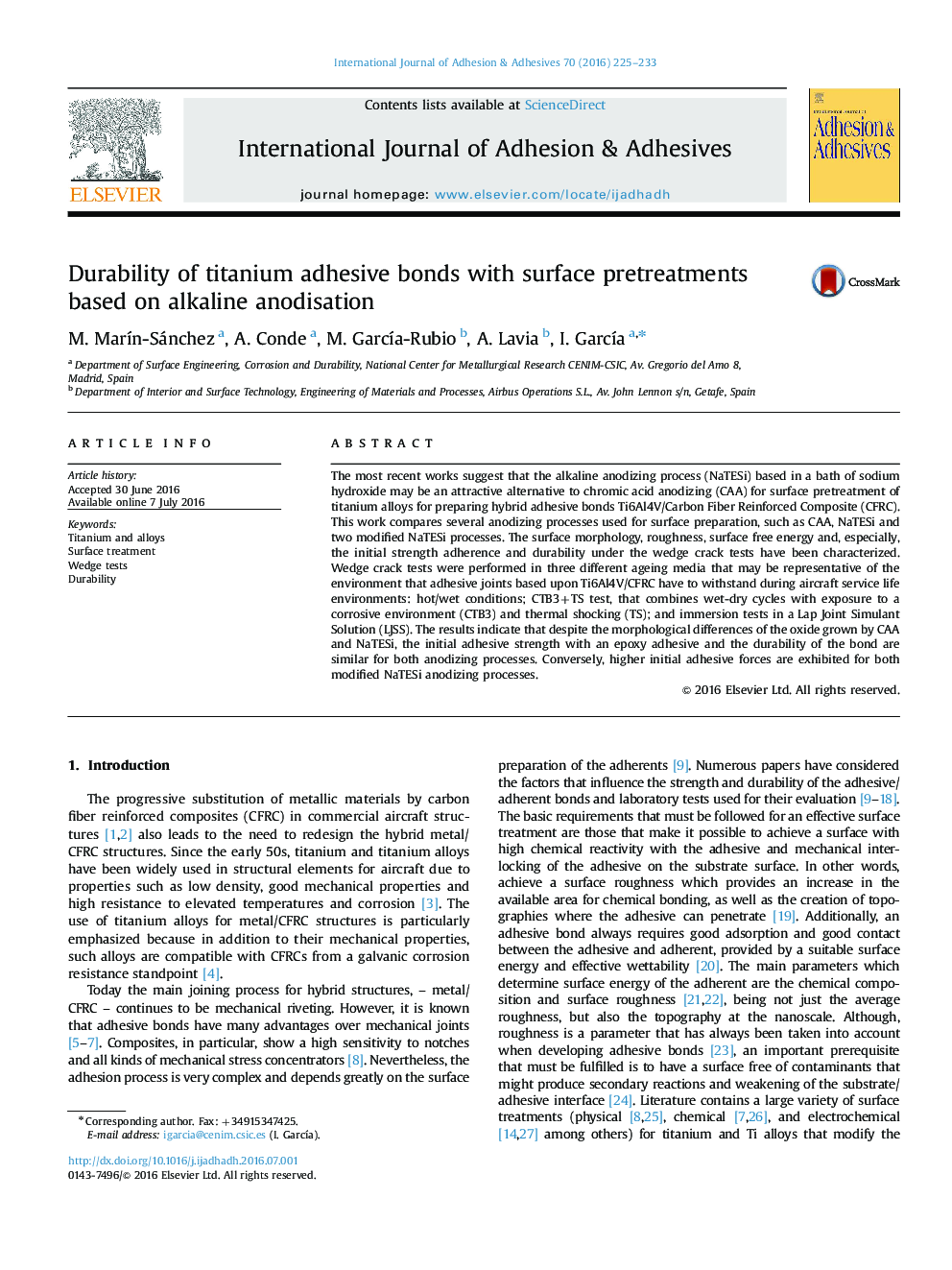| Article ID | Journal | Published Year | Pages | File Type |
|---|---|---|---|---|
| 776048 | International Journal of Adhesion and Adhesives | 2016 | 9 Pages |
The most recent works suggest that the alkaline anodizing process (NaTESi) based in a bath of sodium hydroxide may be an attractive alternative to chromic acid anodizing (CAA) for surface pretreatment of titanium alloys for preparing hybrid adhesive bonds Ti6Al4V/Carbon Fiber Reinforced Composite (CFRC). This work compares several anodizing processes used for surface preparation, such as CAA, NaTESi and two modified NaTESi processes. The surface morphology, roughness, surface free energy and, especially, the initial strength adherence and durability under the wedge crack tests have been characterized. Wedge crack tests were performed in three different ageing media that may be representative of the environment that adhesive joints based upon Ti6Al4V/CFRC have to withstand during aircraft service life environments: hot/wet conditions; CTB3+TS test, that combines wet-dry cycles with exposure to a corrosive environment (CTB3) and thermal shocking (TS); and immersion tests in a Lap Joint Simulant Solution (LJSS). The results indicate that despite the morphological differences of the oxide grown by CAA and NaTESi, the initial adhesive strength with an epoxy adhesive and the durability of the bond are similar for both anodizing processes. Conversely, higher initial adhesive forces are exhibited for both modified NaTESi anodizing processes.
